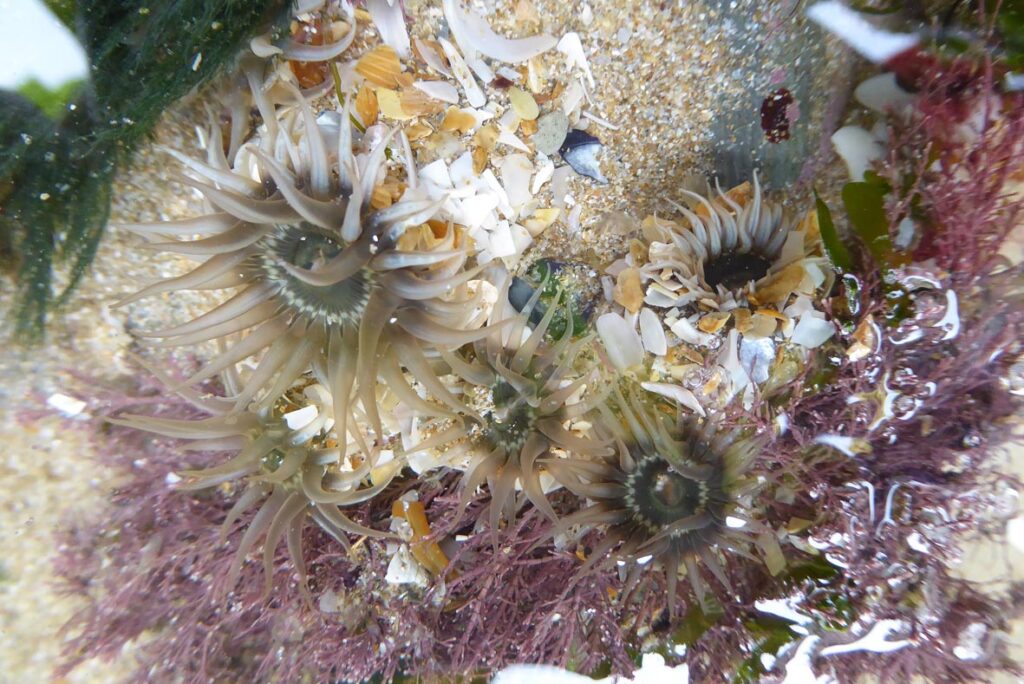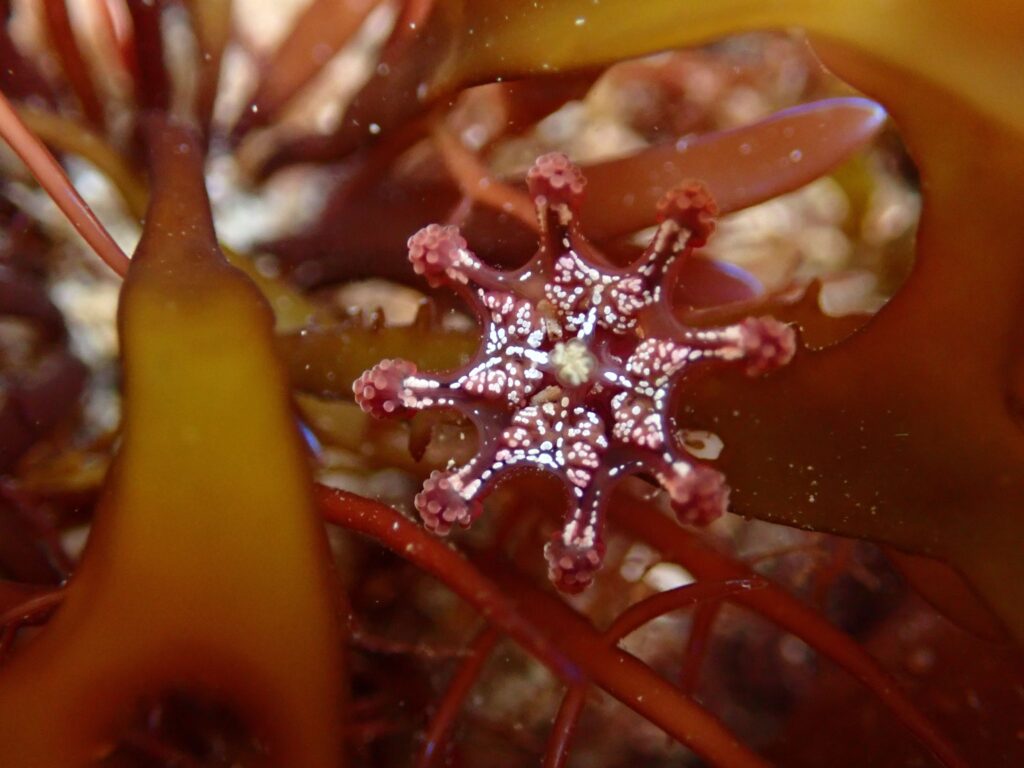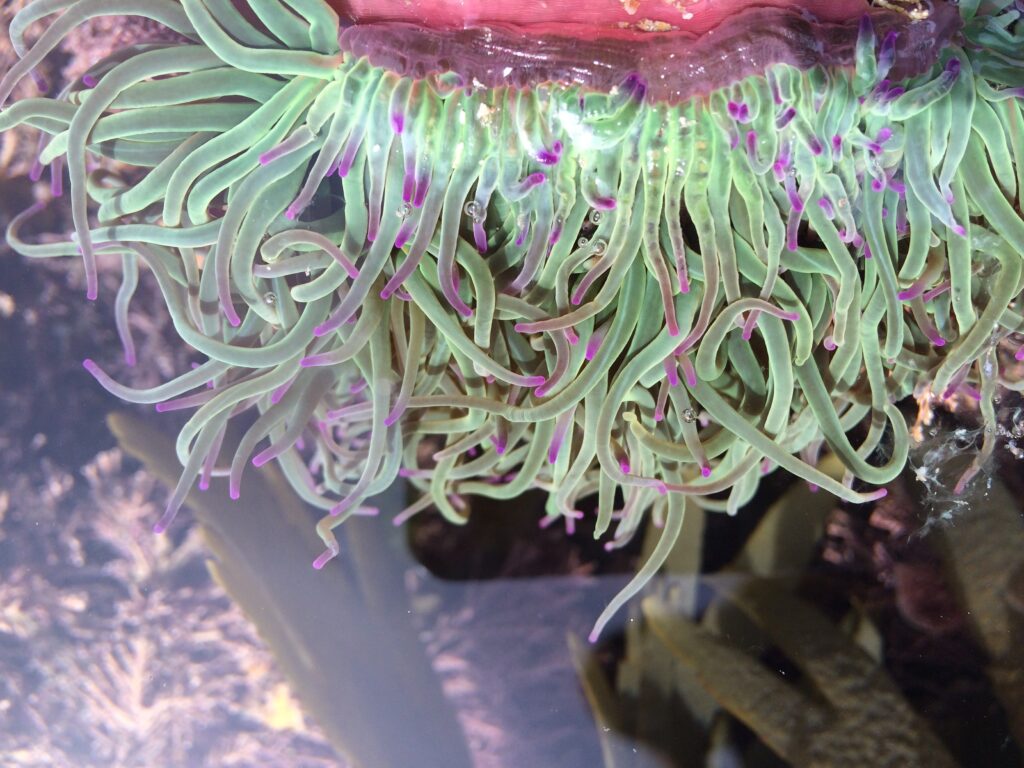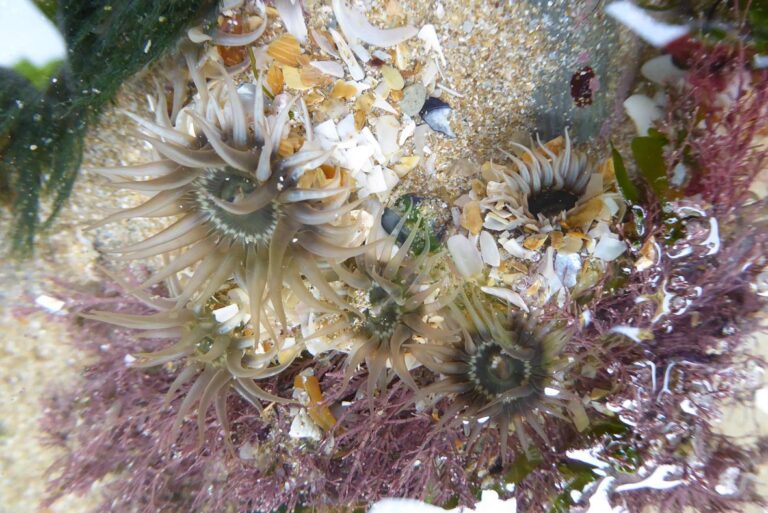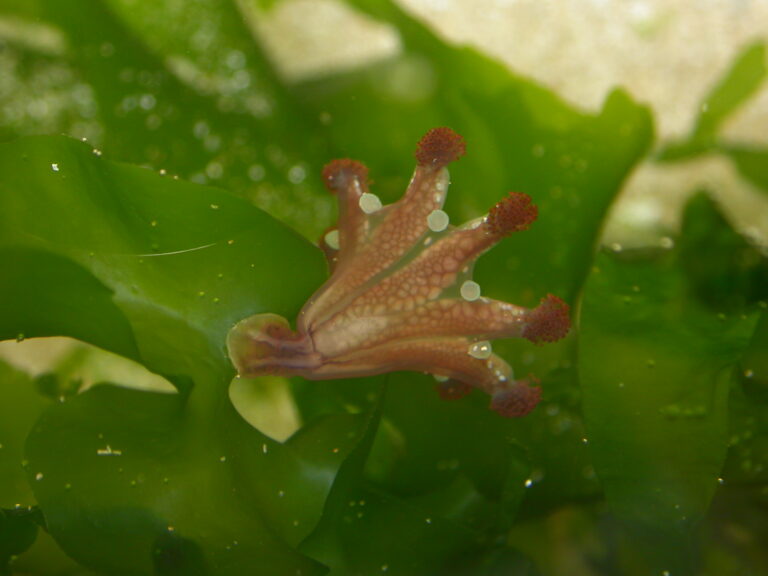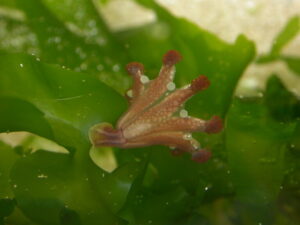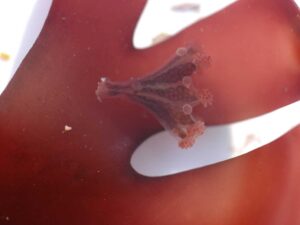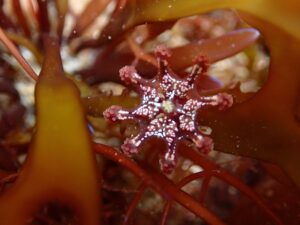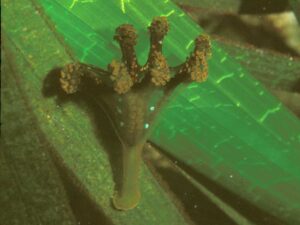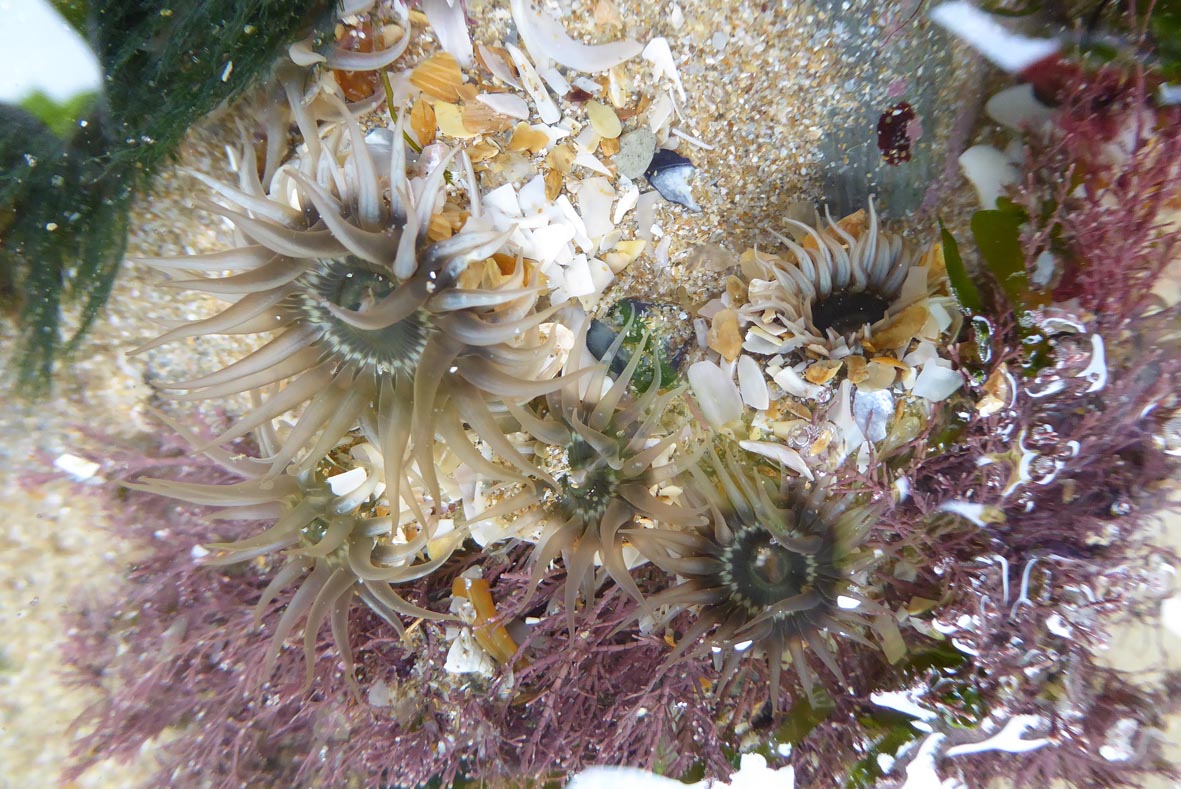Devon’s coasts are teeming with life, much of it hidden beneath the waves or found along rocky shores and estuaries. Habitats from exposed headlands to sheltered coves support a rich tapestry of marine biodiversity, particularly in the intertidal zone.
Devon’s intertidal rock pools are vibrant microecosystems brimming with life. They’re home to a diverse mix of invertebrates, including colonial bryozoans, sea squirts, encrusting and branching sponges, brittle stars, sea urchins, chitons, sea slugs, bivalves and more.
Among the most visually striking invertebrates found here are the sea anemones and stalked jellyfish. These soft-bodied species belong to the cnidarian group. All cnidarians have stinging cells, also known as cnidocytes, which they use to capture prey and defend their territories. Despite their delicate appearance, they’re remarkably resilient to the dynamic and often harsh conditions of the shoreline.
Significant habitats for these species include:
Rocky shores
Rocky shores provide ideal habitats for many sea anemones. They anchor themselves in crevices, beneath overhangs and in shaded rock pools to avoid drying out during low tide.
Tidal pools
Tidal pools retain water at low tide and so provide a stable microhabitat for more delicate cnidarians such as stalked jellyfish and smaller anemones. Unlike their free-swimming relatives, stalked jellyfish have a stalk they use to attach themselves to seaweed or rocks. They gently pulse to catch tiny prey.
Seagrass and seaweed beds
In more sheltered estuarine areas, dense growths of seagrass and seaweed provide excellent attachment points for stalked jellyfish. These habitats offer camouflage and a consistent supply of food.
In Devon, places such as Wembury and Northam Burrows, are hot spots for these species. Their rocky outcrops, tidal pools and sheltered estuarine zones provide ideal conditions for both sea anemones and stalked jellyfish.
Eight species of cnidaria are listed as Devon Species of Conservation Concern:
- Glaucous pimplet (Anthopleura thallia)
- Sea fir (Hartlaubella gelatinosa)
- Trumpet anemone (Aiptasia couchii)
- Scarlet and gold star coral (Balanophyllia regia)
- Kaleidoscope jellyfish (Haliclystus auricula)
- Spotted kaleidoscope jellyfish (Haliclystus octoradiatus)
- St John’s jellyfish (Calvadosia cruxmelitensis)
- A Stalked jellyfish (Calvadosia campanulata)

